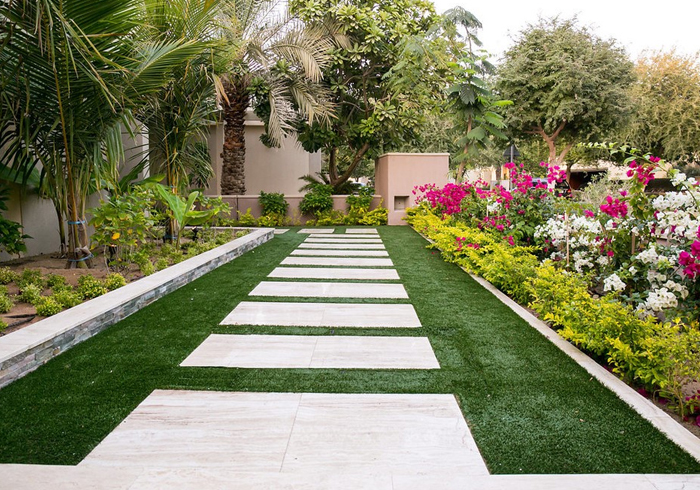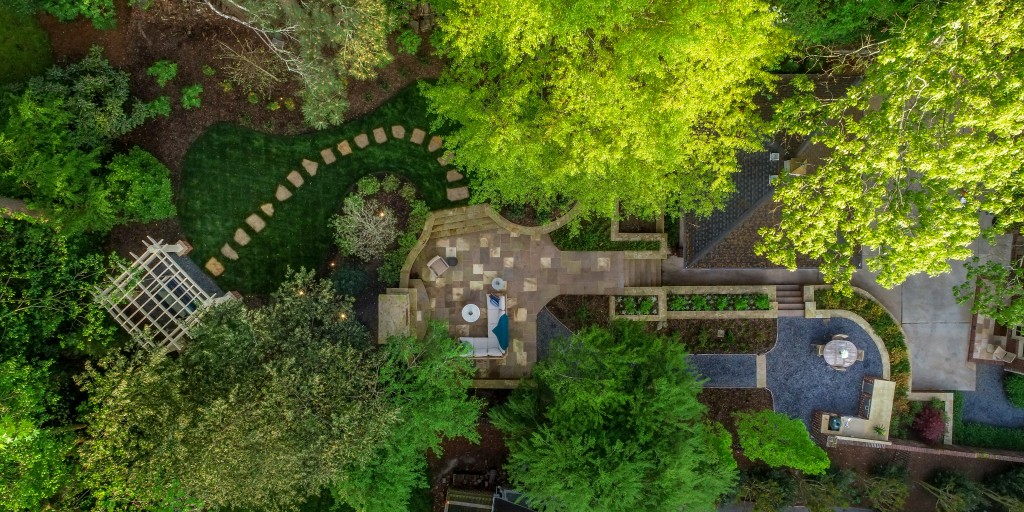The 6-Minute Rule for Landscape Design
The 6-Minute Rule for Landscape Design
Blog Article
What Does Landscape Design Mean?
Table of ContentsExamine This Report on Landscape DesignLandscape Design Can Be Fun For EveryoneSee This Report about Landscape Design4 Easy Facts About Landscape Design Shown
Formal design theme. Credit History: Gail Hansen, UF/IFAS The yard is an expansion of the home where a variety of tasks take location. A backyard can normally be divided into three areas: public (the front backyard), private (the garden), and service (usually the side yard). The area of activity areas depends largely on the kind of area, the size of space needed, the type of activity, and the preferred distance to various other activities and structures (Landscape Design).
The outside wall of the house usually works as the initial wall or beginning point of an exterior space. Incompatible usages must be separated, and related tasks, such as cooking and dining, should be assembled to make the lawn much more reliable and satisfying. When utilizing hardscape to create spaces, use building and construction material comparable to that utilized in your house for continuity from your home right into the yard.
Connected areas. Credit Scores: Gail Hansen, UF/IFAS Utilizing comparable hardscape features and duplicating plants draws the eye around the garden. Vital points along the road can be stressed with growings or features that draw interest and urge movement in a particular direction. Relocating along the path takes an individual from one area to the following and permits the individual to have a variety of experiences.
From a layout perspective, plant products have three major functions in the landscape: aesthetic, structural and utilitarian. Visually, plants develop a visually enjoyable setting and structurally plants organize and specify areas.
What Does Landscape Design Do?
For psychological convenience plants are used as physical or suggested barriers for personal privacy and safety and security. Physical barriers obstruct both the sight and accessibility to an area and include fencings, wall surfaces and plant bushes.
Physical and suggested obstacles. Credit Report: Gail Hansen, UF/IFAS For these factors, the sorts of plants to be used (such as trees, shrubs, or groundcovers) must be picked in the onset of preparation. Plant kinds are picked for their useful capacities to ensure that their future purpose and required room can be taken into consideration at the exact same time.
The above plane, the vertical plane and the ground aircraft ought to all be taken into consideration to produce unit. As soon as the form of a plant bed has been developed, the plants should be massed (grouped) and split to attain visual unity and the desired amount of enclosure. The dimension of a plant mass will depend upon the complete size of the lawn, the dimension of the private plants in the mass, and the focus or influence wanted from the plant material.
Each plant mass is in front of, behind, or next to, an additional mass. Credit Score: Gail Hansen, UF/IFAS Duplicating plants within a mass and duplicating masses with similar plants links the yard together. The private plant attributes should be considered to effectively layer and mass plants.
Our Landscape Design Ideas
All plant compositions begin with the primary structure plants, the large, primarily evergreen history plants-such as the trees and big bushes. These plants different or enframe areas, control the size of the room, and give the starting point for choosing the ideal characteristics of Continued the 2nd layer, midground plants, for massing and infill.
Important factors in the garden directory must be highlighted by the use of special plants, unique frameworks, or yard accessories. Noting limits or entries to rooms can be finished with gates, arbors, and steps, or via making use of one-of-a-kind and vivid plants. The type and/or style theme of the garden will often help determine the essential points and how they must be highlighted.
Other crucial areas in the yard are focal points, which is made use of to aesthetically arrange a landscaped location. Various viewpoints or viewpoints can reveal different make-ups in the landscape that may call for a range of focal points.
Landscape Design Fundamentals Explained
Figure 13. Plant kinds. Credit Scores: Gail Hansen, UF/IFAS After form, appearance is the next leading function of a plant; crude, tool and great structures can be utilized for comparison and focus in the landscape. this article Kind and texture both trump shade in the garden for most of the year. During particular seasons, shade will certainly be the most noticeable quality of the garden.


The enjoyable fragrance of plants, the sound of wind in the trees, the audio and appearance of water, and the colors and appearances of sculptures, pots and yard furniture all include to the experience of the yard. One information that is frequently overlooked is the impact of light on the aesthetic appeals of the plants.
The whole garden changes in feature and appearance throughout the day, and the training course of a year, as the light and temperature change from morning to evening and season to period. Plant option should take into consideration a plant's development rate, its mature dimension and type, and the upkeep it will need.
It is important to know the ultimate mature size of plants so they can be positioned in the right place and spaced appropriately when they are installed. Providing plants space to grow is an obstacle because the common mature size is normally based on optimal expanding problems and the environmental problems of a website might cause a plant to expand larger or stay smaller sized.
Report this page